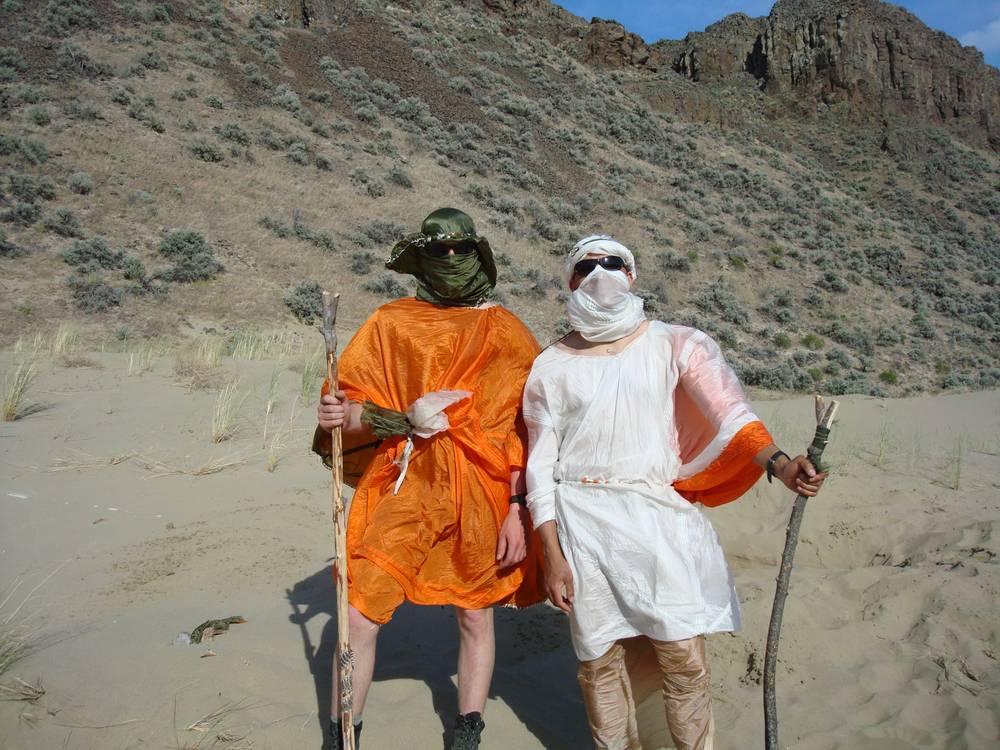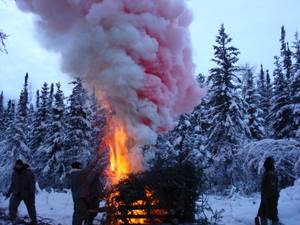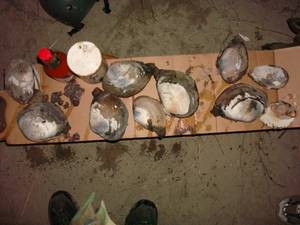The Outdoor Issue
- The beautiful, technical, secret worlds of canyoneering
- The hunger of a man denied: Will Swope eyes the Spartan Race podium
- Air Force S.E.R.E. Specialists are masters in the art of survival
- Fireside fare: Chef Charlie Palmer has your recipe for stellar camp cuisine
- Inside the photos of adventure junkie Cameron Grant
- Gear to outfit your dog with for your next hiking adventure
- Hit the trail: Our guide to 10 of the Las Vegas Valley’s best routes
- Gear up: 5 essentials (and sexy upgrades) for the great outdoors
- A city girl in hot water: Exploring some nearby hot springs
- Fun runs that are actually fun
Imagine floating in a life raft on the 53-degree open ocean with dozens of other people, puking over the side and bailing water for eight long, nauseous hours. Then imagine looking around and laughing at your situation.
That’s what U.S. Air Force Staff Sergeant Matthew Greer did during one particularly rough part of S.E.R.E. Specialist training. He says the guys who manage to find some twisted sliver of fun in a frigid, seasick slog on the water—or any of the program’s other equally uncomfortable training elements—are the ones who usually make it through. Many don’t, broken down by the physical demands, the stress and the sheer brutality of the course that will make them experts in the key components of S.E.R.E.: Survival, Evasion, Resistance and Escape. If you’re in the Air Force, it’s S.E.R.E. guys who will teach you how to survive if your plane gets shot down behind enemy lines. Then it’s S.E.R.E. guys who will help plan the mission to get you out.
Greer and Staff Sergeant Robert Miner, both S.E.R.E. Specialists stationed at Nellis Air Force Base, can’t talk about the “R” in S.E.R.E.—which covers resisting enemy interrogation—but they do say the group’s motto is “Return with honor.” To return at all, though, you have to survive, and Miner and Greer know a thing or two about toughing it out in situations that would reduce the rest of us to sniveling, shivering rescue cases. S.E.R.E. Specialists train in all major climates: tropical, desert, arctic, temperate and open ocean. They learn to create snow caves for shelter, start fires in the rain forest, build solar stills for water and eat slugs as a calorie-boosting snack. They also learn to function under extreme duress, performing detail-oriented tasks on little to no sleep or food for days at a time. And that’s just the two-week “gut check” to get into the course. When Miner heard someone in a Jason Bourne movie say that the rogue operative had been up for 53 hours, he thought, I’ve done that.
Of course, most civilians will never be in a true survival situation, and most who are could’ve avoided it with better preparation or better decisions. Greer advises bringing the basics on any outdoor adventure: signaling equipment, flashlight or headlamp, food and extra water. “So many people end up spending a night in the woods because they didn’t bring illumination,” Miner says.
Air Force S.E.R.E. Specialist Robert Miner says these Pacific Northwest geoducks are easy to dig up in low tide and "taste like fishy snot." In fact, they're so easy to gather that Miner says some students harvest too many and regret it once they taste them "because they are required to use everything they collect."
Contrary to reality-show depictions of Bear Grylls struggling through rough terrain to self-rescue, Miner says most of survival “is sitting under a tree conserving energy.” If you’re lost, the first step should be sitting down. “Don’t panic and get more lost,” Miner adds. “Stop immediately and try to think.”
Water is often the most pressing problem, especially in the desert. During the evasion phase of his training, Greer got lost and had to hike for three days without water. It takes a lot to freak out a S.E.R.E. guy, but even he couldn’t help thinking, This is bad.
Greer and Miner say you should purify whatever water you find, if possible. If you don’t have a pump or the proper chemicals, boil your water, and if that’s not an option: “Drink from an open source and know it’s going to make you sick. But the immediate concern is dehydration,” Miner says. Just remember to take a sample of whatever you drink to help diagnose you later.
And when’s the right time to drink your own pee?
“Never,” Miner says, explaining that doing so just concentrates the toxins your body is trying to get rid of. People who drink their own pee and survive do so “in spite of drinking their pee.”
Greer laughs. “Don’t ever drink your pee … drink your buddy’s pee!”
There’s that attitude again, the laugh in the face of danger/vomit/barren-arctic-with-no-shelter attitude that works with countless hours of training to keep the S.E.R.E. guys alive in all sorts of unbelievable circumstances.
“The difference between people who survive or die is, mentally, [the ones who die] accepted the fact that they were going to die,” Miner says.
And while Miner and Greer can teach airmen to skin a snake, build shelter and evade enemy capture anywhere in the world, the one thing they can’t teach is the will to survive.







